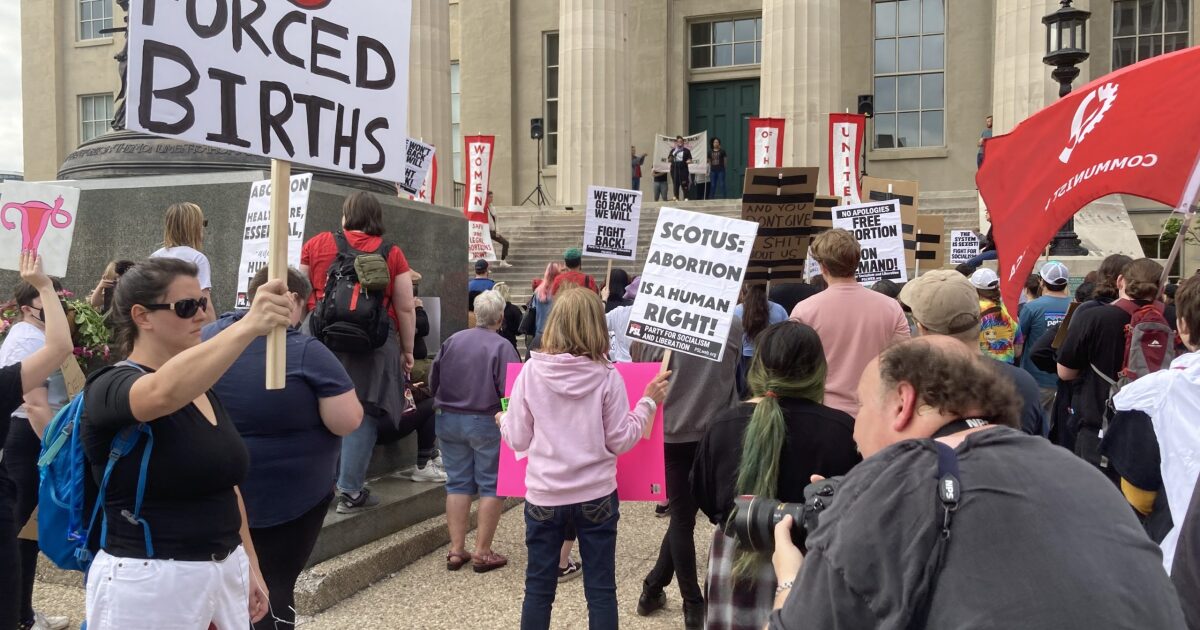The number of legal abortions has increased nationwide, a year after the U.S. Supreme Court ended the constitutional right to abortion. This is despite the fact that many states ban abortion altogether or restrict access to abortion after six weeks.
The latest WeCount report from the Society of Family Plannings finds that there were nearly 117,000 additional legal abortions in the year after Dobbs in the 35 states where abortion remains legal. The 14 states that imposed a full or six-week ban on abortion had nearly 115,000 fewer legal abortions.
The report tracked abortions performed in hospitals, clinics, private doctor’s offices and virtual clinics in the United States for a full year, from July 2022 to June 2023.
Researchers suggest the uptick in abortions is due to the expansion of telemedicine abortion services and the availability of increased assistance for people seeking out-of-state abortions.
In states that have outright bans on abortion, such as Wisconsin and Missouri, legal abortions have fallen to zero. The WeCount report does not track abortions that take place outside the health system, where women cross the border for treatment or manage their own abortions using pills they order online from pharmacies foreign. Some data suggests that online pill requests increased after the Dobbs v. United States decision. Jackson Womens Health Organization.
In states like Illinois and Kansas, which are surrounded by states that ban abortion, the number of legal abortions has increased sharply. Illinois saw the largest increase in abortions in the year following the Dobbs decision, with 21,500 more abortions. According to the WeCount report, Illinois served as an access point for people coming from other states to receive care. Kansas saw 5,340 more abortions during the same period.
In states where abortion is legal, many facilities have also increased capacity and new clinics have opened, including in Illinois and Kansas. Several facilities now offer telehealth services or virtual clinics that provide remote abortion care at lower prices.
The report shows a significant increase in abortions performed in virtual-only clinics. The number of these abortions increased from a monthly average of 4,045 abortions before the Dobbs decision to an average of 6,950 abortions a year later. These abortions now represent more than 8% of all abortions in the country.
Several states have passed new laws to expand access to abortion and protect providers, including policies requiring insurance coverage for abortion and laws helping fund abortion care for state residents. outside the state.
Each month, the Chicago Abortion Fund helps more than 500 people in Illinois and another 500 people visiting clinics in other states, Chicago Abortion Fund executive director Megan Jeyifo said in a news release.
She said the organization offers support to those seeking abortions, including covering travel and childcare costs, meal stipends and appointment costs. But Jeyifo said the services offered are not a sustainable solution.
While we are committed to filling the gaps, let us be clear: this is a band-aid on a gaping wound, Jeyifo said. She said systemic change is needed and the organization is challenging policymakers to address the crisis.
Although abortion is still legal in Indiana until August 2023, the state still saw a decrease in abortions in the year following the Dobbs decision. The state had passed a near-total ban on abortion in August 2022. It went into effect for a week in September, but was ultimately suspended for nearly a year as the constitutionality of the law was challenged in court of State. About a fifth of people who had abortions in Indiana in 2022 came from people out of state, mostly from Kentucky, where a near-total ban has been in effect since August 2022.
Ohio banned abortion for the first two months after Dobbs, but abortion is now legal before 22 weeks of pregnancy. Still, the state has seen 5,120 fewer abortions in the past year since the Dobbs decision.
The Ohio Supreme Court is currently deciding the legality of an abortion ban six weeks before many women learn they are pregnant. The court could reinstate the ban just weeks before voters decide whether to enshrine the right to abortion in the constitution on November 7.
Some states like Missouri, Oklahoma, South Dakota, and North Dakota, where abortion has been outlawed, have seen dramatic declines. The average number of abortions performed each month was in the single digits, reaching a low in Missouri and zero in South Dakota.
The Society of Family Planning will continue tracking abortions through 2024.
Taylor Wizner of Ideastream Public Media contributed to this report.
Contact journalist Darian Benson at dbenson@wfyi.org.
Side Effects Public Media is a health reporting collaboration based at WFYI in Indianapolis. We partner with NPR stations in and around the Midwest, including KBIA and KCUR in Missouri, Iowa Public Radio, Ideastream in Ohio, WFPL in Kentucky and KOSU in Oklahoma.
#Legal #abortions #decline #year #Dobbs #Expanded #outofstate #access #virtual #care #played #role
Image Source : www.sideeffectspublicmedia.org

